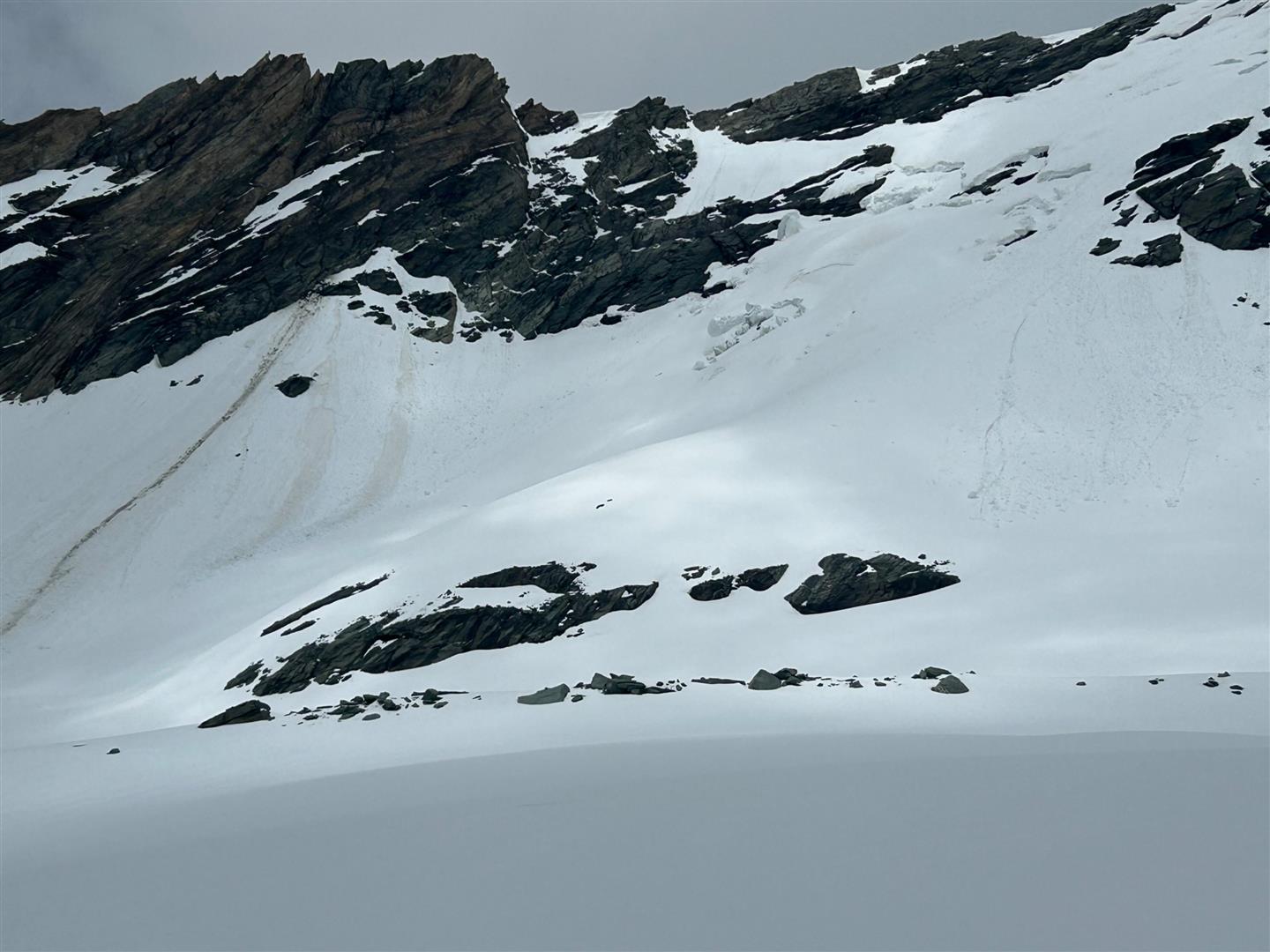Some rainfall and weeklong lower temperatures lie before us – in high alpine regions local snowfall is possible. The fresh fallen snow will be deposited mostly on a wet old snowpack. Recent precipitation was shower-like, which generated a marked layer of graupel. This serves as a weak layer. On very steep shady slopes in high alpine regions isolated snowdrift accumulations can be prone to triggering for that reason. In addition, in rocky terrain, diffuse radiation makes numerous naturally triggered small-to-medium sized loose snow avalanches expected. In isolated cases the wet old snow will be swept along. Also glide-snow avalanches are possible on steep grass-covered slopes.
Current avalanche and weather situation
Fresh snow in the mountains, focus on Main Alpine Ridge
Since this morning (21.05.2024) it has been raining, sometimes heavily, especially along the Main Alpine Ridge and in southern East Tirol; in the lowlands it is predominantly dry, the precipitation will set in somewhat later in the evening and persist through the night. Snowfall level will descend to 2000m, in East Tirol somewhat higher. On Wednesday morning, scattered clouds in North Tirol, gray skies in East Tirol. In afternoon showers will spread over all of Tirol. Cool, instable for the rest of the week, repeated bouts of showers possible. Winds mostly light to moderate, where there are showers a bit stronger winds.
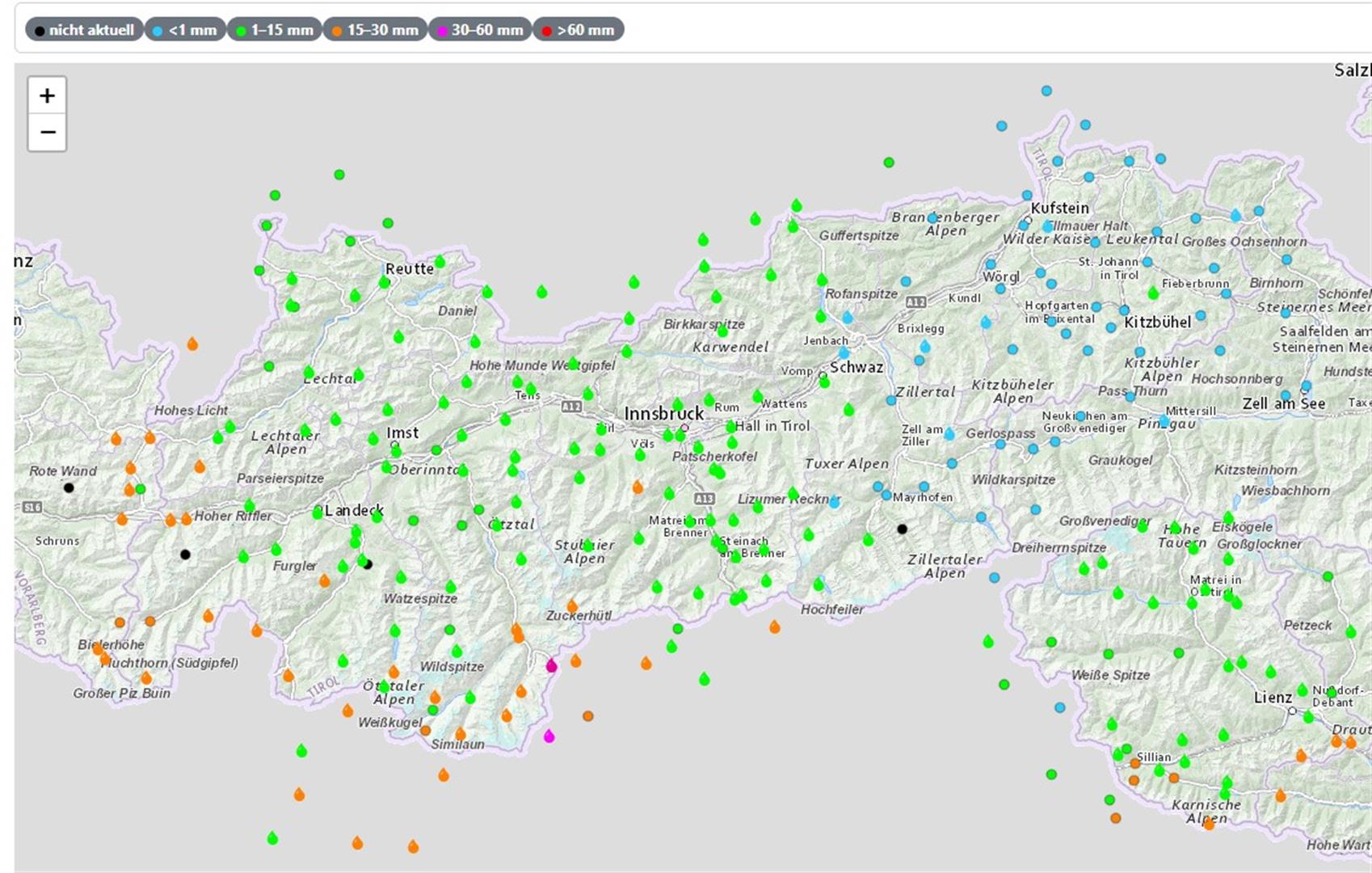
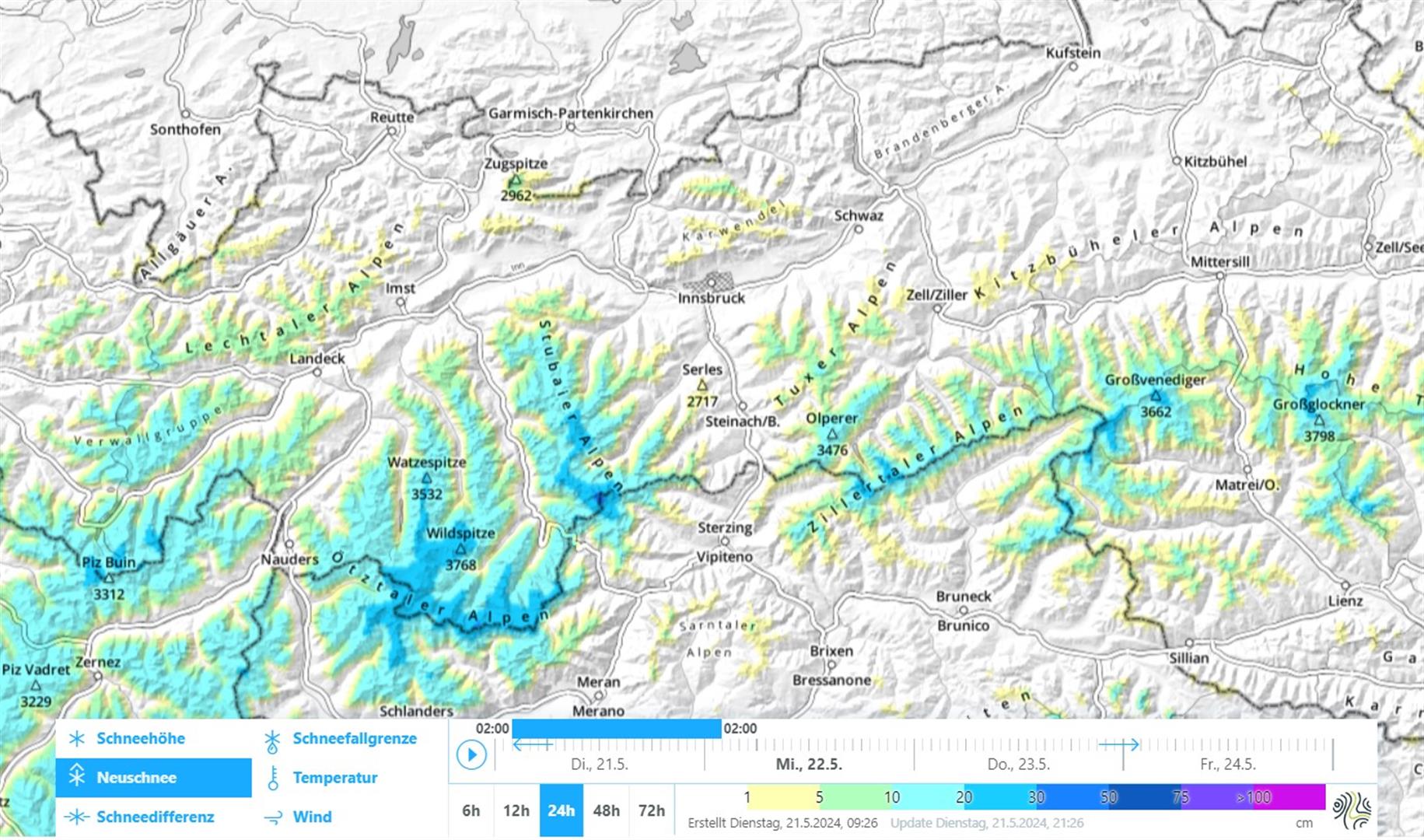
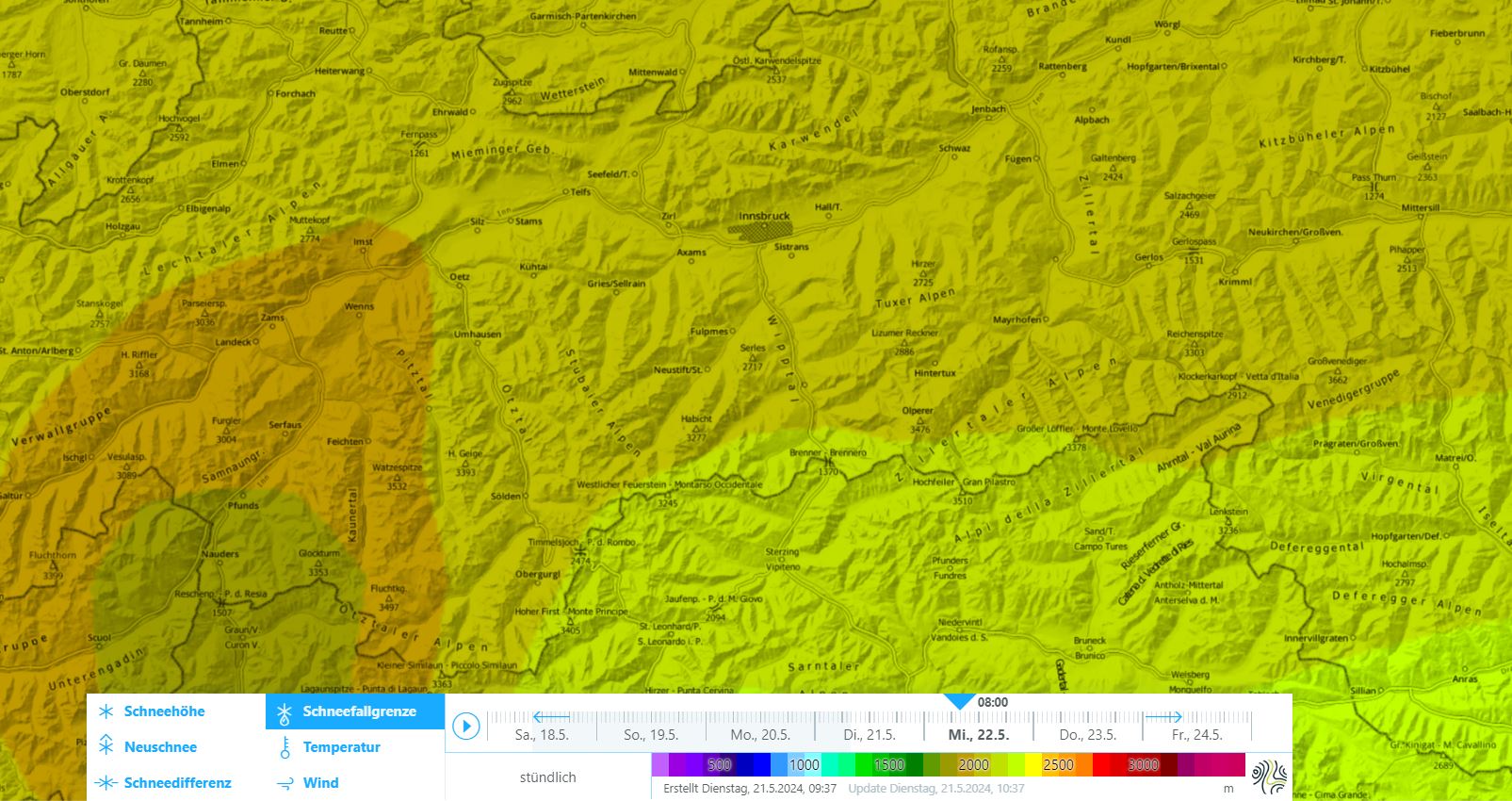
Higher avalanche danger for a short time
The fresh snow in the coming days will be deposited in all aspects atop a wet old snowpack. Due to the shower-like quality of the precipitation, conditions for slab avalanches may be a given from place to place: massive graupel layers as the weak layer. Stronger winds where there are showers can lead to freshly generated snowdrift accumulations and form a slab. Isolated danger zones are found on very steep shady slopes and very steep slopes near ridgelines in high alpine regions. Avalanches will be mostly small, triggerable only for a short spell. As a result of the strong diffuse solar radiation (also unleashed by showerlike precipitation) the snowdrift masses quickly consolidate. Whereas diffuse solar radiation leads to a quick loss of firmness in the fresh snow. For that reason, numerous naturally triggered loose-snow avalanches can be expected from steep rocky terrain in all aspects. Depending on the amount of fresh snow, they will be mostly small but medium-sized ones are also possible. In isolated cases they can sweep along deeper layers. Isolated glide-snow avalanches are possible on steep grass-covered slopes.
Review
On the weekend of 10-12 May there was sunny weather in all of Tirol amid a high pressure front and dry air masses. Nocturnal outgoing long wave radiation was good, and thus, firn snow was good. An extended stable phase has not occurred since then. This has deteriorated snow quality.
While in North Tirol on Wednesday 15.05 there was still foehn, bringing dry weather, in East Tirol the southerly air current brough heavy precipitation. Showers like in thunderstorms spread to North Tirol on Thursday evening. Focus was in East Tirol, where up to 40cm of fresh snow was deposited. Also along the Main Alpine Ridge there was fresh snow registered. Snowfall level lay at 2000-2500m.
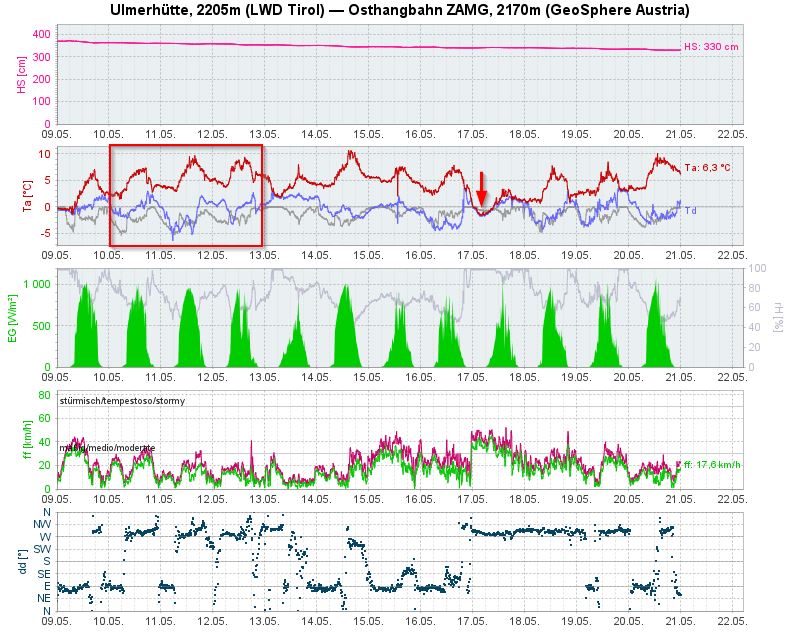
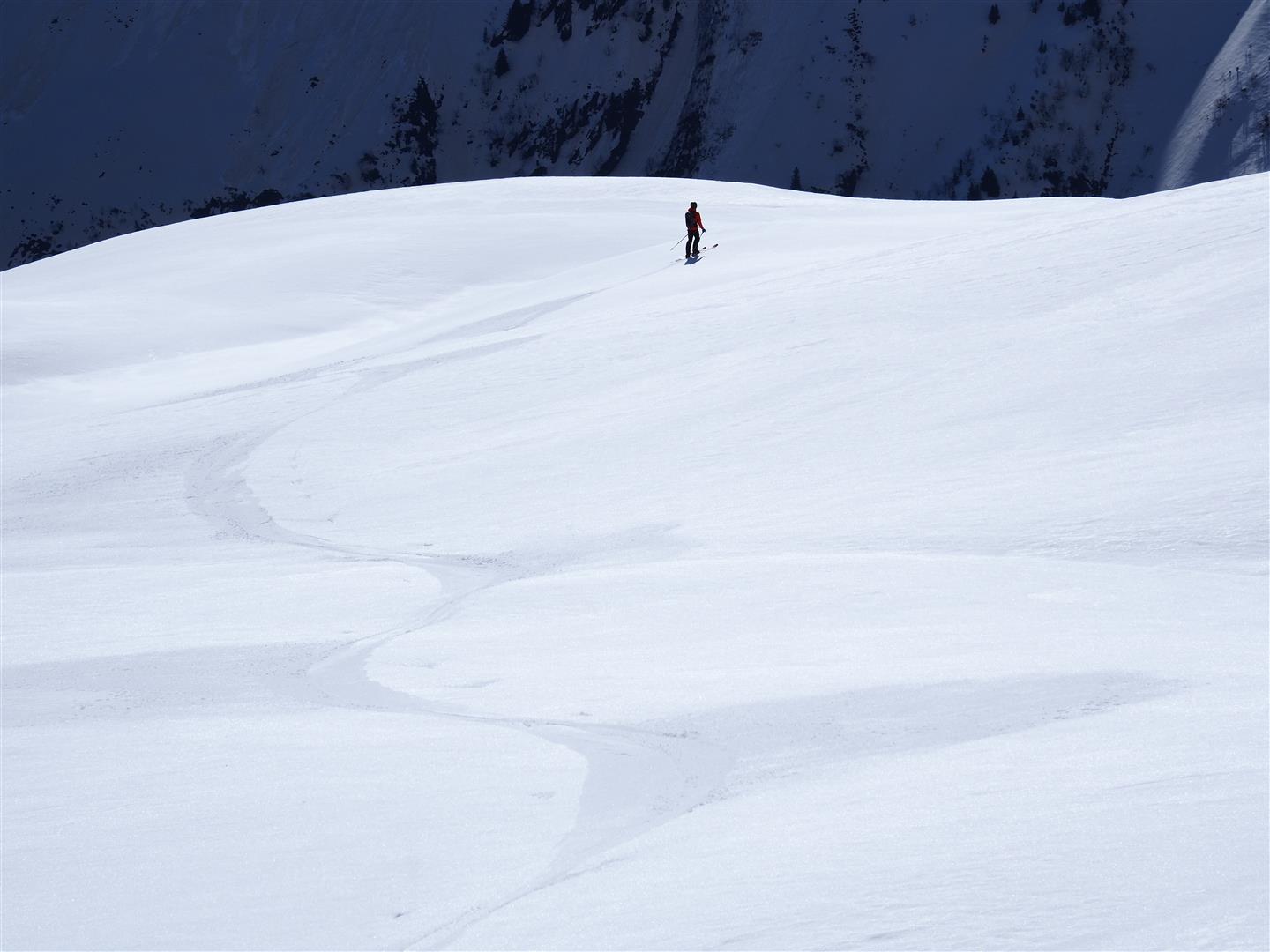
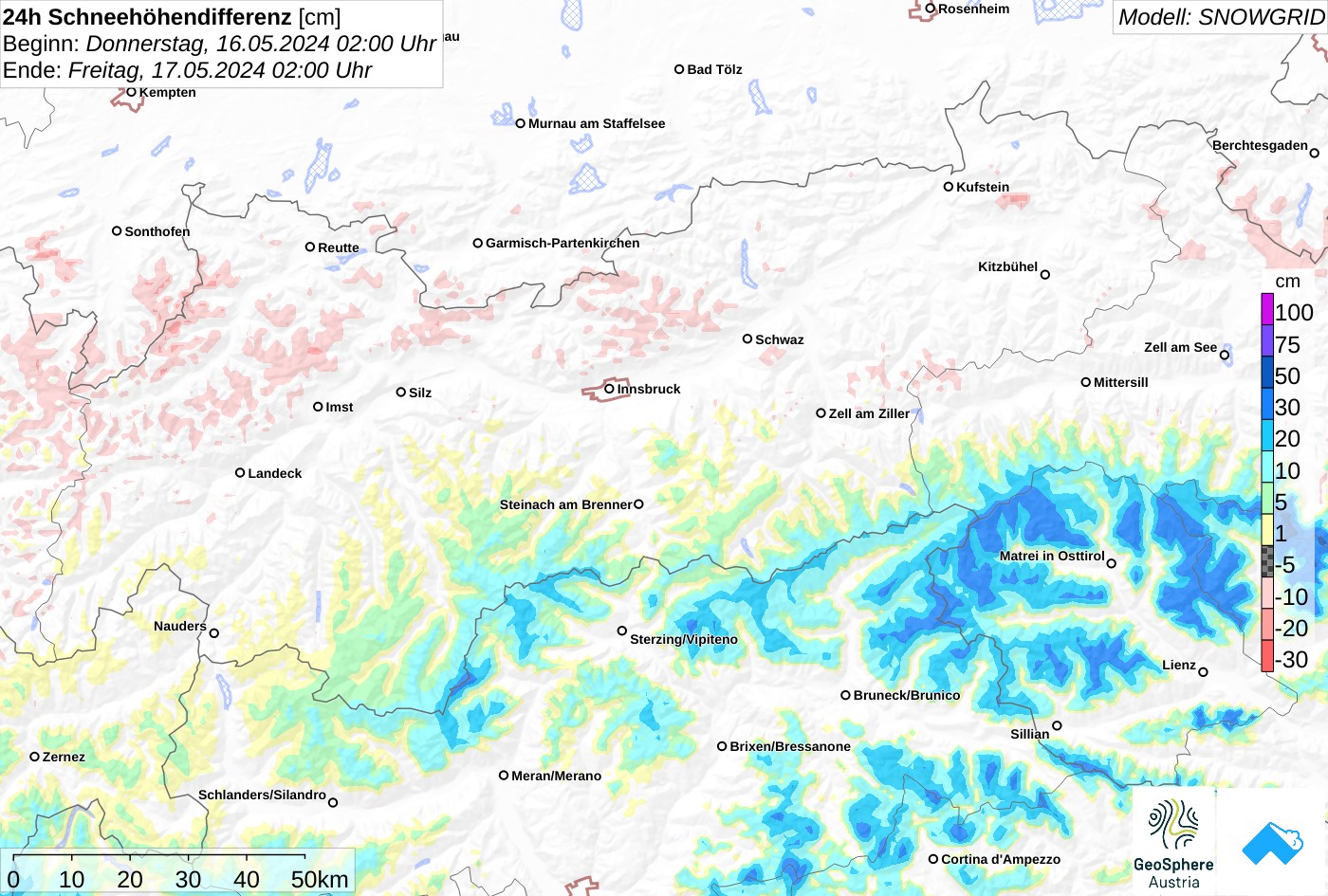
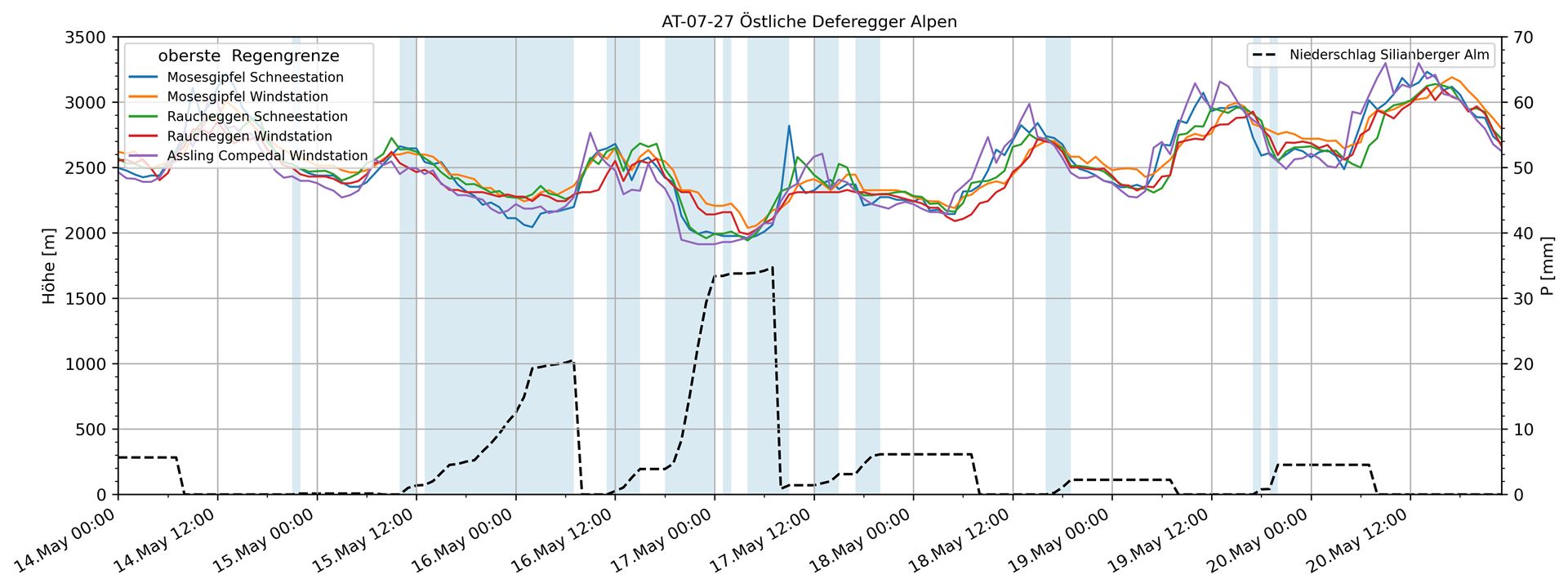
The precipitation brought wave upon wave of graupel. On the Grossen Möseler in the Zillertal Alps, a 5-10 cm thick layer of graupel formed at 3000m.
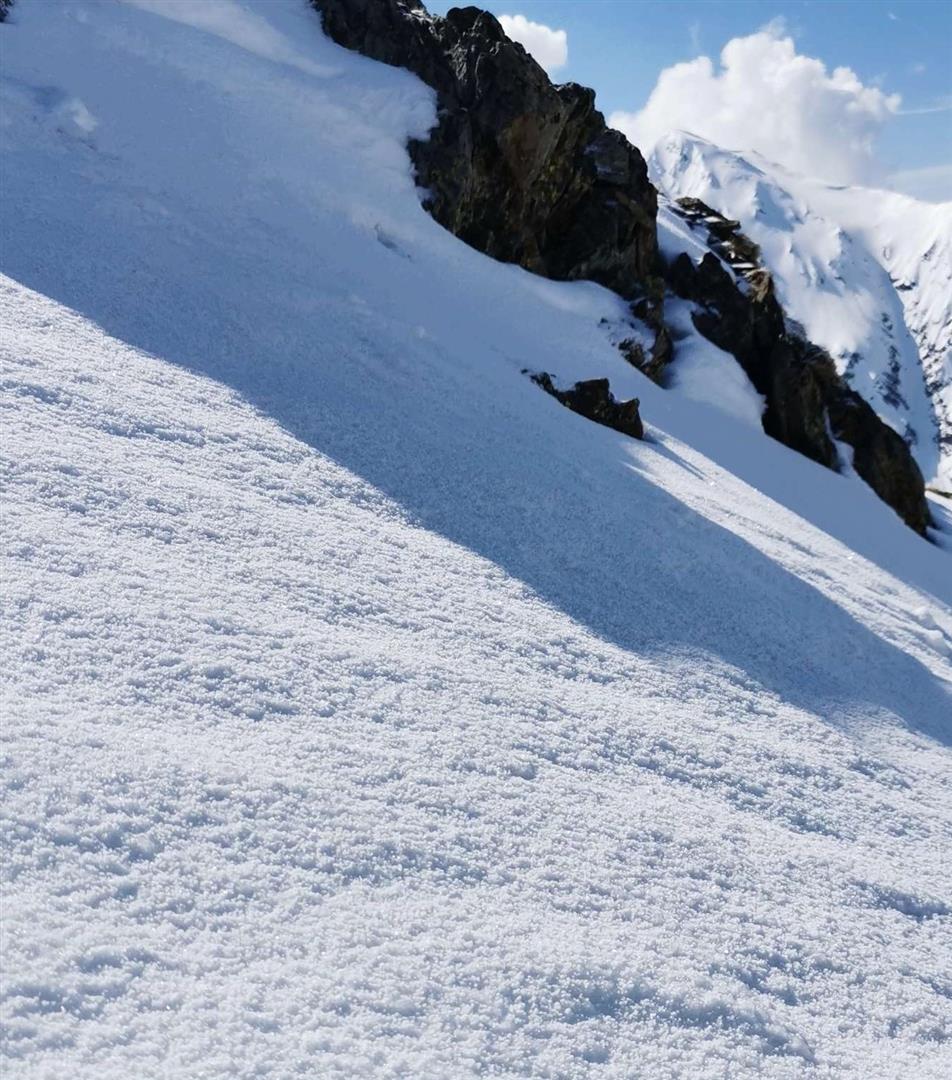
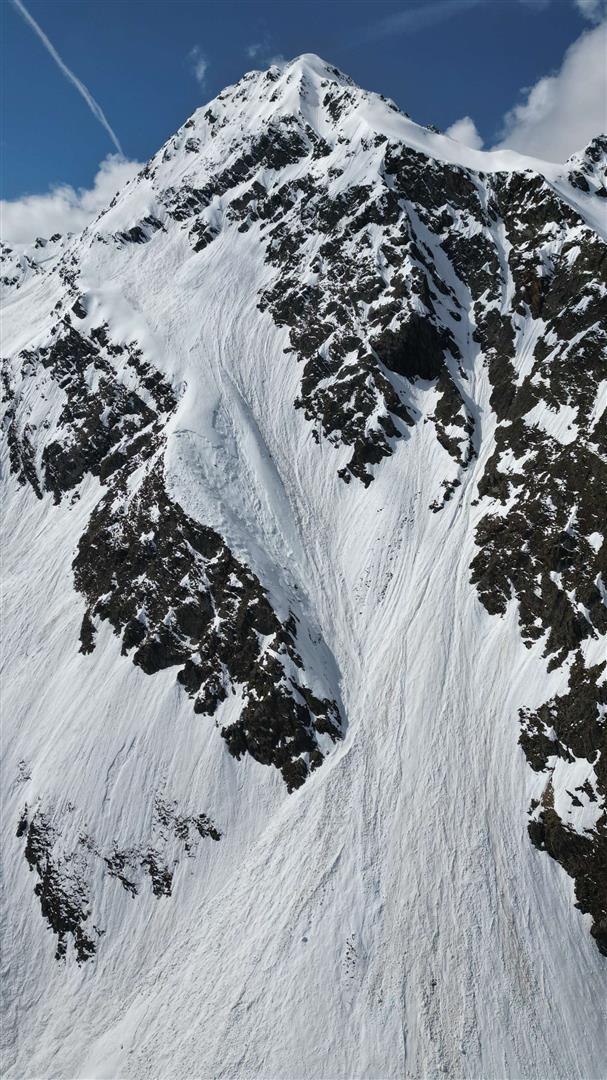
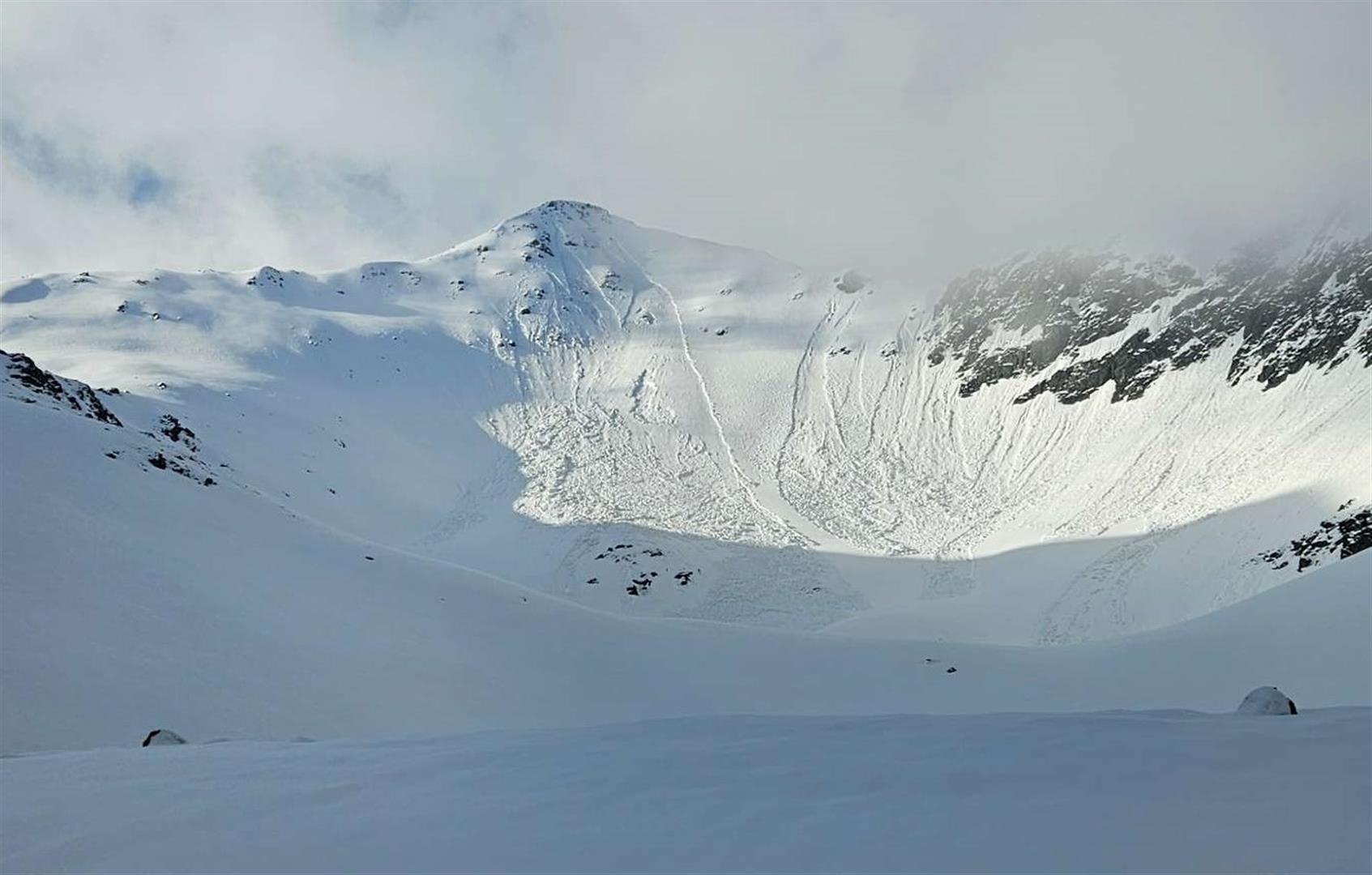
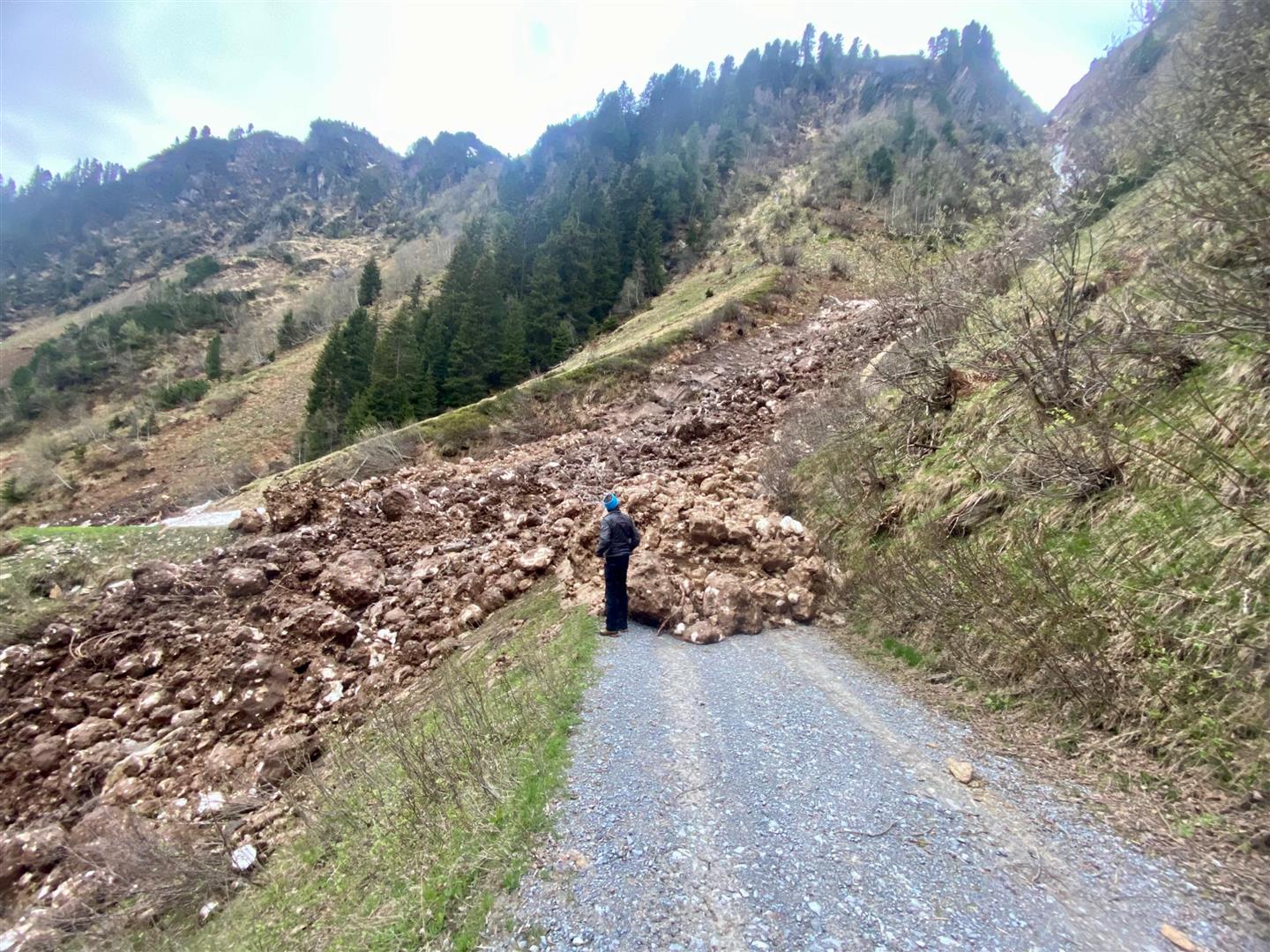
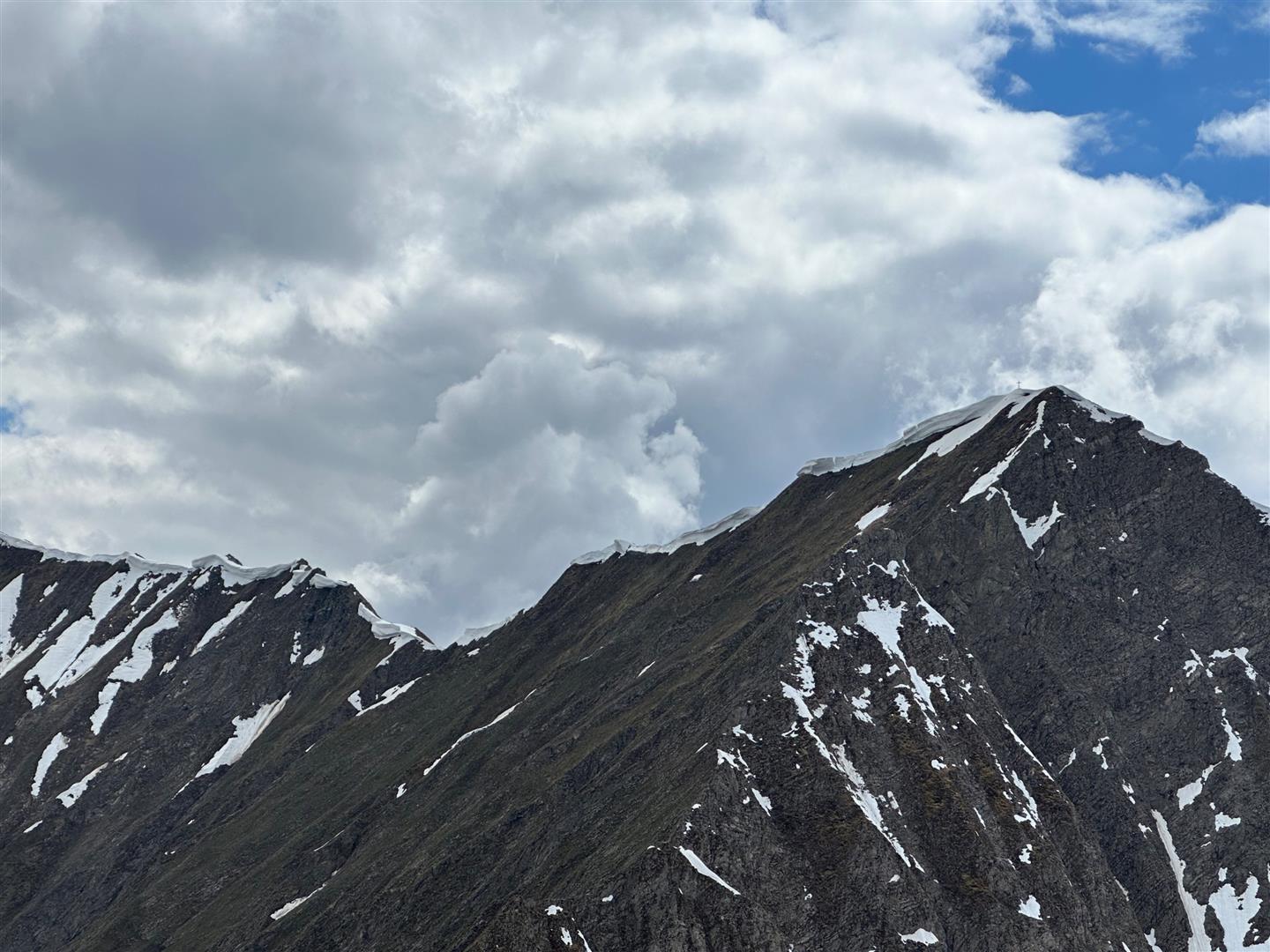
The slopes are becoming bare of snow. While there is little or no snow on sunny slopes up to high altitudes, in ridgeline terrain there are still impressive cornices, from which a certain danger arises. Above on the Elmer Kreuzspitze in the eastern Lechtal Alps. photo: © Stefan Zangerl, 19.05.2024.
